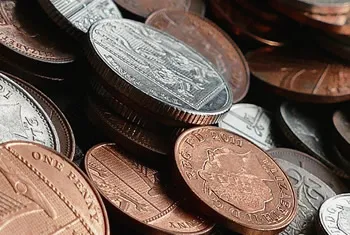伊朗(Iran)
正式名称伊朗伊斯兰共和国(Islamic Republic of Iran)
旧称波斯(Persia)
南亚国家。面积1,643,510平方公里。人口约63,442,000(2001)。首都︰德黑兰。伊朗人(波斯人)占人口的45%;其他民族还包括了库尔德人、卢尔人、巴赫蒂亚里人和俾路支人。语言︰法尔斯语(波斯语;为官方语)。宗教︰伊斯兰教(国教);多数是什叶派。货币︰里亚尔(Rls)。伊朗位於海拔460公尺以上的高原,四周山脉围绕。全境一半以上的地区是盐漠和荒芜之地。约十分之一的土地为可耕地,其他四分之一的土地适於放牧。伊朗有丰富的石油,储量占世界的9%,亦为该国的经济基础。政府形式为伊斯兰教共和国,一院制。总统是国家暨政府首脑,但最高政治和宗教权威是宗教领袖。
伊朗在西元前100,000年便有人居住,但历史记载始於西元前3,000年左右的埃兰人。西元前728年左右米底亚人在此繁盛,但後为波斯人推翻(西元前550年),西元前4世纪时又为亚历山大大帝征服。西元前247~西元226年间安息人(参阅Parthia)建立了一个操希腊语的帝国,其後控制权转至萨珊王朝手中。640年阿拉伯穆斯林征服这里,统治伊朗850年。1502年萨非王朝建立,并持续到1736年。1779年开始受卡札尔王朝统治,但19世纪时该国家经济受俄罗斯和大英两帝国的控制。礼萨.汗(参阅Reza Shah Pahlavi)在一次政变中取得政权(1921)。其子穆罕默德.礼萨.沙.巴勒维因计画现代化和西化而於宗教领袖失和,於1979年被推翻;什叶派教士何梅尼後来建立了一个伊斯兰教共和国,压制了西方的影响。1980年代毁灭性的两伊战争因陷於困境而停止。1990年代政府已逐渐以较自由的方式领导国家事务。
English version:
Iran
formerlyPersiaCountry, South Asia. Area: 634,562 sq mi (1,643,510 sq km). Population (1997 est.): 62,304,000. Capital: Tehran. Iranians (Persians) constitute 45% of its population; other ethnic groups include the Kurds, the Lurs, the Bakhtyari, and the Balochi. Language: Farsi (Persian) (official). Religion: Islam (official); most are Shiites. Currency: rial. Iran occupies a high plateau more than 1,500 ft (460 m) above sea level and is surrounded by mountains. More than half of its surface area consists of salt deserts and other wasteland. About one-tenth of its land is arable, and another one-fourth is suitable for grazing. Iran's rich petroleum reserves account for about 9% of world reserves and are the basis of its economy. It is an Islamic republic with one legislative house; its head of state and government is the president, but the supreme political and religious authority is the religious leader. Habitation in Iran dates to c. 100,000 BC, but recorded history began with the Elamites c. 3000 BC. The Medes flourished from c. 728 BC but were overthrown (550 BC) by the Persians, who were in turn conquered by Alexander the Great in the 4th century BC. The Parthians (see Parthia) created a Greek-speaking empire that lasted from 247 BC to AD 226, when control passed to the Sasanians. Arab Muslims conquered them in 640 and ruled Iran for 850 years. In 1502 the Safavids established a dynasty that lasted until 1736. The Qajars ruled from 1779, but in the 19th century the country was economically controlled by the Russian and British empires. Reza Khan (see R. Shah Pahlavi) seized power in a coup (1921). His son Mohammad Reza Shah Pahlavi alienated religious leaders with a program of modernization and westernization and was overthrown in 1979; Shiite cleric Ruhollah Khomeini then set up a fundamentalist Islamic republic, and Western influence was suppressed. The destructive Iran-Iraq War of the 1980s ended in a stalemate. During the 1990s the government gradually moved to a more liberal conduct of state affairs.


















